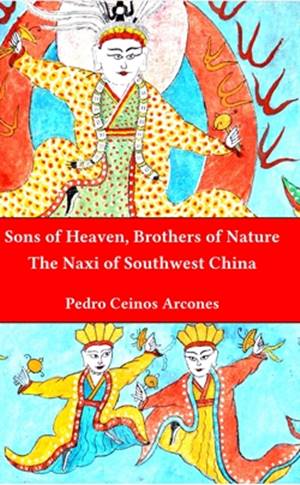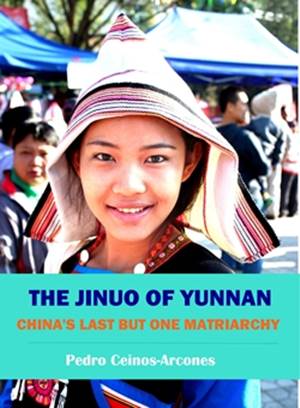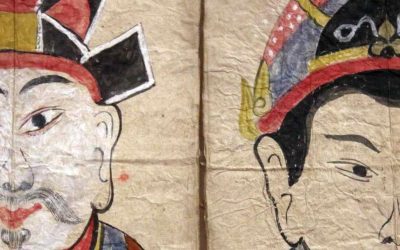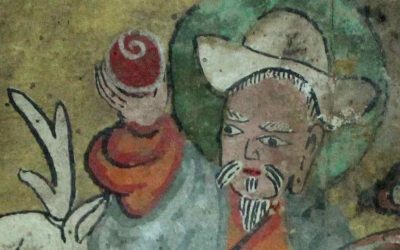Santasombat, Yos. Lak Chang: A Reconstruction of Tai Identity in Daikong. Canberra, AUS: Pandanus Books, 2001. p 1. (Introduction)
The Tai ethnic group, in its different branches, is beyond any doubt one of the most widespread of any ethnic group in the Southeast Asian peninsula. Different branches of the Tai are found from Assam, Vietnam and Laos to the Chinese province of Guangxi, and from Thailand to the interior of Yunnan. In Yunnan province, southern China, there are at least two major centres of the Tai civilization. One is Sipsongpanna, home of the Tai Lue in southern Yunnan, and another is Daikong, home of the Tai Yai in western Yunnan. While the Tai Lue of Sipsongpanna have been described sketchily by various students of Tai studies, little is known of the Tai Daikong in western Yunnan.
The Tai Daikong are known by various names. They call themselves «Tai Luang» or Tai Yai and in fact share remarkable cultural similarities with the Tai Yai of Shan States and the Tai Yai in Mae Hong Son province of northwest Thailand. According to Chea Yanchong, Tai Daikong refers to a particular group of Tai who settled and continued to live in the areas south (dai) of the River Kong (or Salaween). The Chinese scholars have invariably called this group «Tai Dehong», «Tai Mao», or «Tai Nua»; all these different names connote different state names or places of residence. Professor Chea further distinguished Tai Daikong into two distinct groups. The first group is called Tai Nua (northern Tai). This group of Tai Nua lives near the Burma- Chinese border, in the areas of Muang Mao, Muang Wan Teng or Wan Tieng, Muang One and Chiang Fang. Another group is called «Tai Dai» (southern Tai). The Tai Dai live in the areas of Muang Khon, Muang Ti and Muang La. These two groups of Tai Dehong share many similarities in terms of cultural traits. The spoken languages are basically the same but the written languages are mutually incomprehensible. Tai Dai uses the Tai Pong written characters of the Shan States, while the Tai Nua’s written characters resemble those of the Tai Ahom in Assam.
As if the multitude of tribe and state names (e. g. Tai Daikong, Tai Dehong, Tai Mao, Tai Nua, Tai Luang and Tai Yai) are not bewildering and confusing enough, a number of Western scholars have adopted the Burmese term «Shan» and referred to Tai Mao or Tai Daikong as «Chinese Shan», «Mao Shan», or «Shan of Yunnan». In fact, as Leach has noted, the Burmese apply the term «Shan» consistently to all the inhabitants of the Yunnan- Burma frontiers area who call themselves Tai. The Burmese usage of the term «Shan» has not been confined only to Tai Yai but also included other ethnic Tais such as Tai Lue and Tai Khun who speak different dialects.
The question, then, is who are the Tai Daikong? Postulating from the linguistic arguments, around the eighth century AD, the Tai world already extended across much of northern Southeast Asia, differentiated into five linguistic groups. The western group were ancestors of the present Tai Yai in Burma and Yunnan. By the next century, Tai-speaking chieftaincies were established on the flooded plains of the River Mao. These were believed to be Muang Mao and Pong. In the succeeding centuries, the western group of Tai-speaking people established themselves as the governing population through the Burmese Shan states, Assam and in much of Yunnan.
According to Wyatt, Tai-speaking people can be differentiated into five groups: (1) the northern group, ancestors of Zhuang; (2) Upland Tai group, ancestors of Black, Red and
White Tai; (3) Siang Kwang group, ancestors of central Thai (Siamese); (4) Lao group, ancestors of Lao and Sukhothai languages…
More posts on China ethnic groups
The Landing Yao Ancestral Festival of July
The Landing Yao Ancestral Festival of July All around China, the seventh month of the lunar calendar is known as the month of the ghosts, because in this month is celebrated the Mid-Year Festival. The Mid-Year Festival has nowadays many variations and it includes a...
We are lucky- A list of free books about the Zhuang
Free books about the Zhuang Fortunately for the lovers of the Zhuang nationality culture and language, there are some books, freely available to all the interested readers. Here, there is a list of the books we know are in this moment free to read and/or download....
The world of Naxi nationality Dongba deities
The Naxi people believe that every object, animal, plant, or natural phenomena has its own spirit. In the Dongba scriptures more than 2,400 spirits can be found. The sky, earth, sun, moon, mountains, water, wind, and even stones are all believed to be animate and...
The Bulang, aborigines of Yunnan
The Bulang are one of the oldest populations in the Southwest of Yunnan Province. They are considered one of the aboriginal inhabitants of this province, where they could have lived for more than two thousand years. They inhabit this mountainous region that forms the...
To marry a goddess in Yunnan (Jinuo nationality)
Pedro Ceinos-Arcones. China's last but one matriarchy: The Jino of Yunnan. 2018 Jinuos’ main religious specialists are bailabao, mopei and zhalai or Blacksmith. The oldest man of the main clan in the village is called zhuoba or mother of the village; the oldest of the...
Childbirth in Naxi culture
The rituals performed at birth suggest that in the Naxi traditional thought the entering of the Sv life god in a person is a gradual process developed during the last term of pregnancy and the first days of life, and that this process is considered complete in a first...









